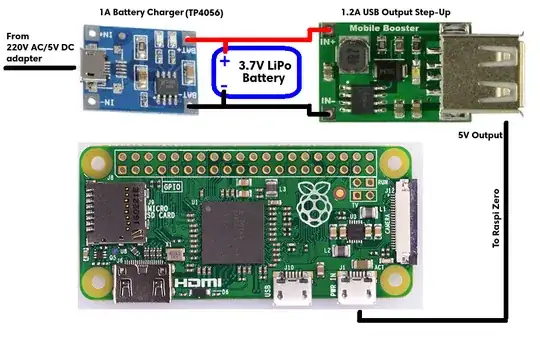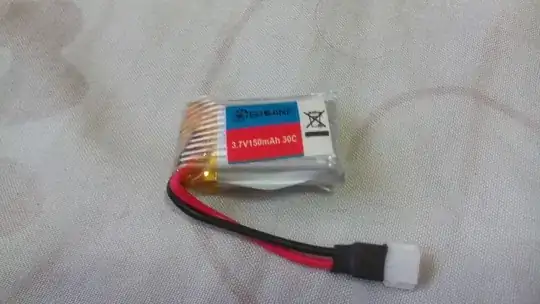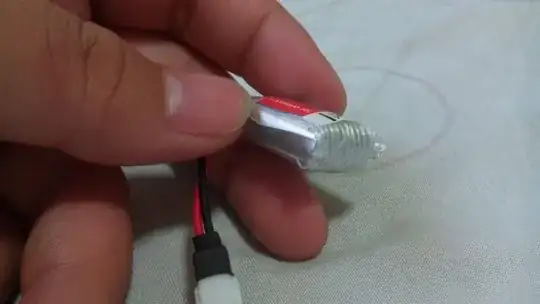I have several pi-zero boards and I utilize them to monitor environmental conditions (such as humidity, temperature and intrusion) of each room in home.
For continuous operation, I want to eliminate power blackouts. So, I decided to make a basic UPS for pi-zero boards. (need to be as small as possible)
I'm not a low level hardware guy, but a software guy. Here is my design: Power comes from AC/DC adapter to the battery charger. The battery charger charges 3.7V battery and powers 3.7V DC/5V DC converter concurrently. Then the (assumed) uninterrupted power comes to pi-zero board.
In theory, the design is expected to fulfill its mission. But the real world is different. I have 2 questions to the electric/electronic experts.
- In the case of no power blackout, can the charger operate successfully to power the DC/DC converter and to charge the battery? In other words, does continuous/non-stop output current cause the charger burn out or decrease in the battery lifetime? I think the charger is designed to cut the output current when the battery is full.
- In the case of power blackout, can the battery and the DC/DC converter operate successfully to power pi-zero? Does having the charger connected (with no purpose) to the circuit have a negative impact, in this case?
#Update March 29, 2017
The linked question and comments at DIY uninterruptable power supply (UPS) for Raspberry Pi Zero with power supply selector



